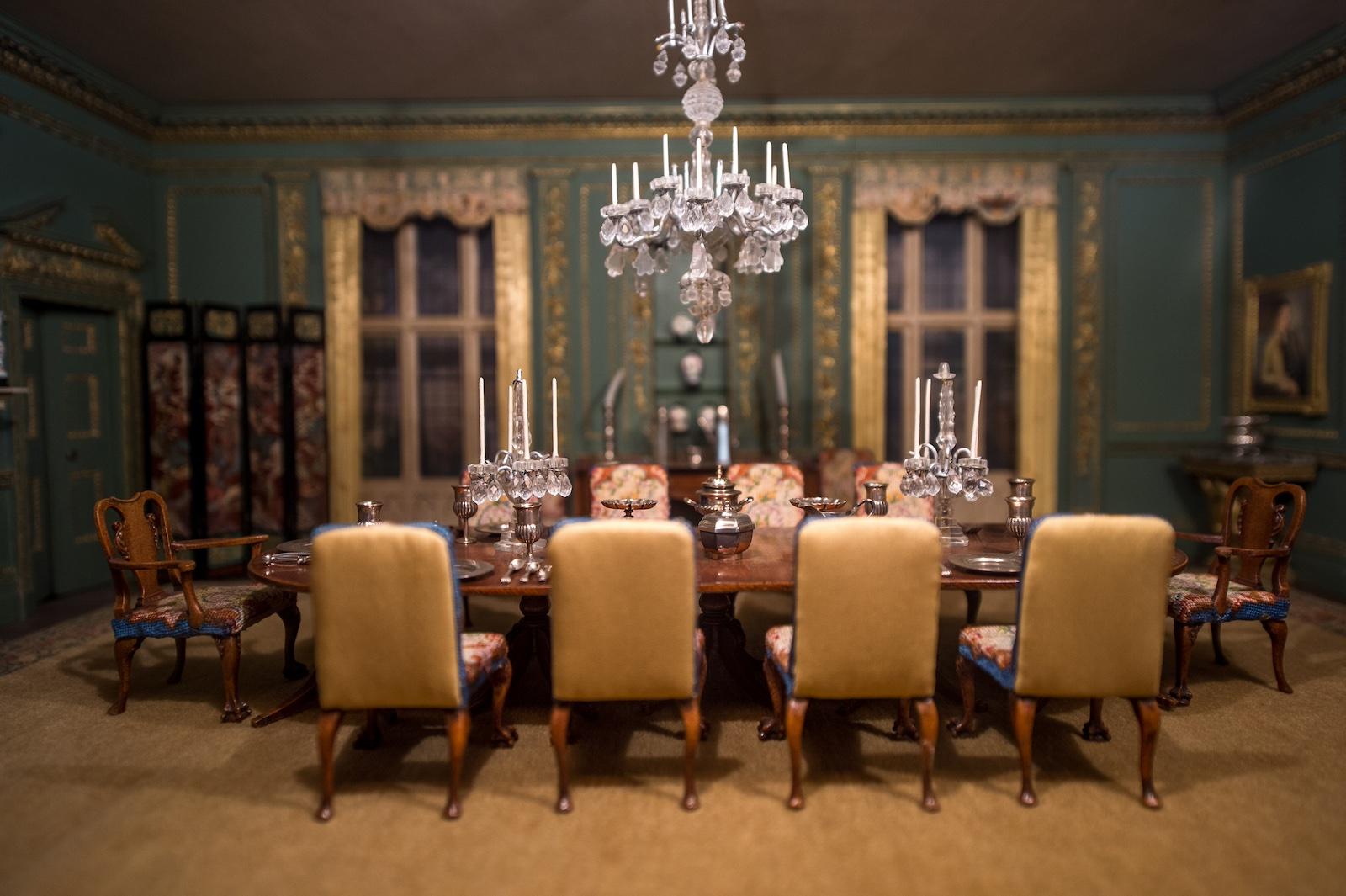
Miniature room box, by Ruth McChesney; displayed at Carnegie Museum of Art, Pittsburgh, Pennsylvania. License
Established in 1895, the Carnegie Museum of Art (CMOA) was America’s first contemporary art museum. Part of the Carnegie Museums of Pittsburgh— founded by philanthropist Andrew Carnegie as a gift to the city— the CMOA is one of four museums dedicated to art, music, literature, and natural science. Its sister museums are Carnegie Museum of Natural History, Carnegie Science Center, and The Andy Warhol Museum.
Held in public trust, the CMOA’s permanent collection of hundreds of art pieces spans genres, cultures, and time periods. It includes iconic impressionist and post-impressionist paintings and an assortment of plaster casts of famous architecture from all around the globe.

Renowned French Impressionist Claude Monet’s (1840–1926) world famous Water Lilies (Nymphéas) is one of the 250 paintings in his iconic Giverny flower garden series, painted over the last thirty years of Monet’s life.
The massive canvas, with its tactile brushstrokes and vibrant colors, provides a window into a peaceful garden scene. Water lilies float on the pond’s glassy reflection of blue sky and leafy tree boughs.
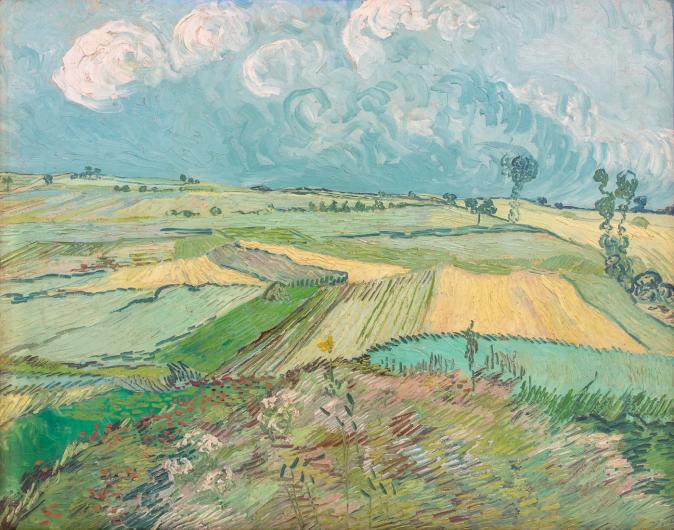
Dutch Post-Impressionist painter Vincent van Gogh’s (1853–1890) instantly recognizable style— characterized by bold colors and dramatic brushwork—contributed to the rise of Expressionism in modern art.
Wheat Fields After the Rain (The Plain of Auvers)— painted just days before his untimely death— depicts a cheerful patchwork of fields under a cloudy blue sky, rendered in exuberant, thickly-layered brushstrokes.
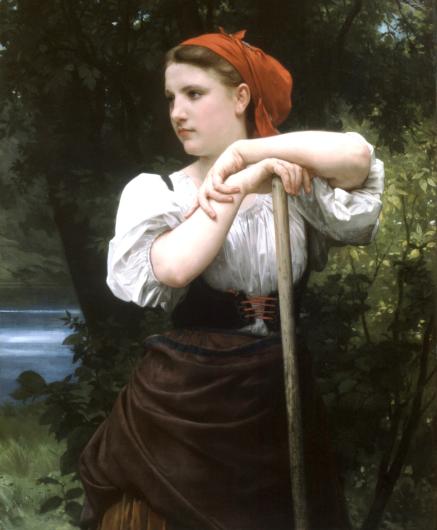
Popular French realist William-Adolphe Bouguereau (1825-1905) interpreted classical subjects through a modern lens. Honored in the United States and Europe, Bouguereau was the quintessential salon painter of his generation— reviled by the impressionist avant-garde.
The Haymaker (1869) depicts a beautiful, young white farmworker, her hair up in a red kerchief, leaning on the wooden handle of a scythe with a river and sun-dappled woodland in the background.
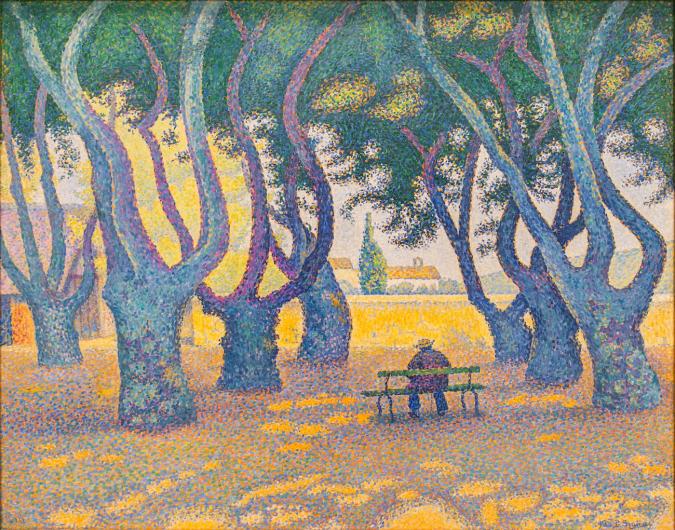
French Neo-Impressionist painter Paul Signac (1863–1935) met Monet and Georges Seurat in 1884. Struck by Seurat’s systematic approach to art and his use of scientific color theory, Signac abandoned Impressionism, helping Seurat develop Divisionism.
Now called Pointillism, this technique juxtaposes small dots of pure color, which blend in the viewer's eye, rather than on the canvas. Place des Lices, St. Tropez, showing a seated figure on a bench in the middle of a grove of gracefully curved trees— all carefully composed of tiny dots of color— is an excellent example.
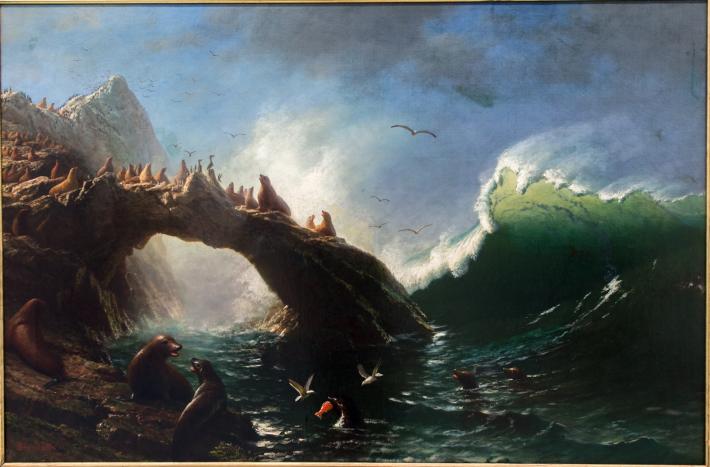
One of the foremost 19th century landscape painters, German American Albert Bierstadt (1830–1902) was part of the second generation of New York’s Hudson River School in New York and was known for his gloriously expansive, luminous landscapes of the American West.
In his 1887 seascape, Farallon Island, seals sunning and fishing amongst the rocks are backlit by the rising sun, while a huge cresting wave glows turquoise in the light.
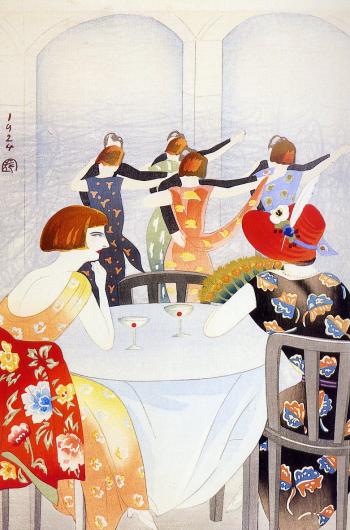
Tokyo painter and woodblock printer Toyonari (Yamamura Koka) (1885-1942) graduated in 1907 from the Tokyo School of Fine Arts, studying with internationally renowned painter and ukiyo-e woodblock print designer Ogata Gekko (1859-1920).
Dancing at the New Carlton Hotel in Shanghai (Odori Shanhai Nyu Karuton shoken) (1924) is thought to be the first moga (modern girl) woodblock print. Combining modern trends with traditional Japanese sensibility, the print depicts women in fashionable bobbed hair and Western-style clothes, dancing and enjoying cocktails at a Shanghai hotel café.
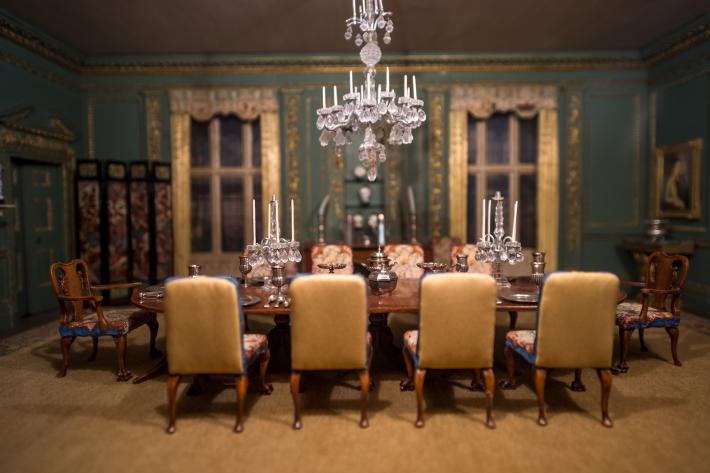
A hidden nook near the Halls of Architecture and Sculpture, the CMOA’s Miniature Gallery features a number of Ruth McChesney’s (1915–204) exquisite miniature rooms. A talented member of the International Guild of Miniature Artisans specializing in needlework, McChesney created over twenty museum-quality miniature rooms, which are on permanent display in several collections across the United States and in England.
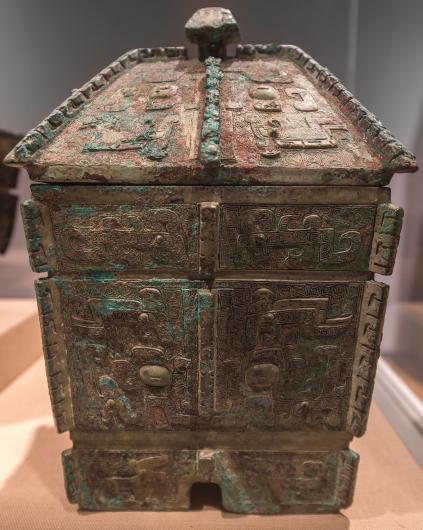
This beautiful bronze ritualistic vessel, 1300-1150 BCE, Shang Dynasty, China is covered with intricate linear patterns. Used by the ruling elites, these elegant vessels symbolized power and commanded respect. Cast in bronze between a two-part ceramic mold that was broken to release the bronze, each vessel was unique.
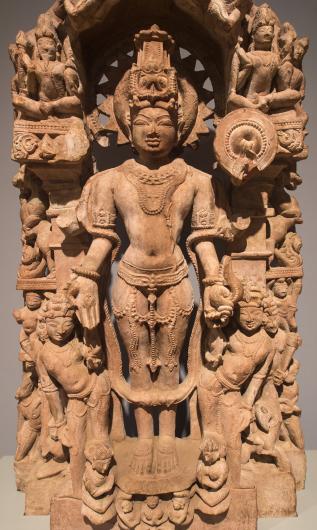
Known as the Preserver of the Universe, Vishnu is one of the most important Hindu gods. This 12th century Stele of Vishnu and attendants from central India depicts the crowned god in elaborate jewelry, holding a conch shell, flanked by various attendants. The conch shell is blown like a war trumpet and signifies Vishnu’s protective attributes.
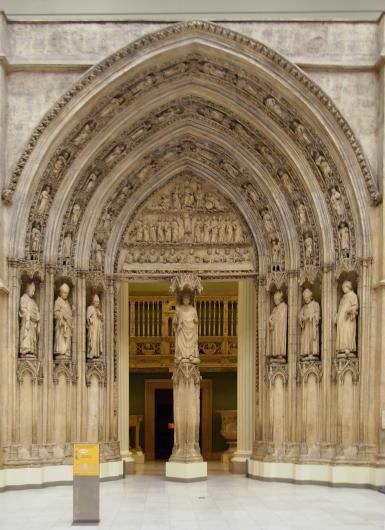
Creating plaster casts of famous art and architecture was a popular 19th century way to give people an experience of far away masterpieces. The CMOA’s Hall of Architecture, established in 1907, houses over 140 plaster casts of historic architectural elements.
One of the three largest plaster cast collections in the world, and the largest in America, the collection features this plaster cast of the North Transept Portal of the Bordeaux Cathedral— a phenomenal example of 13th century French Gothic architecture.
Megan D Robinson
Megan D Robinson writes for Art & Object and the Iowa Source.























